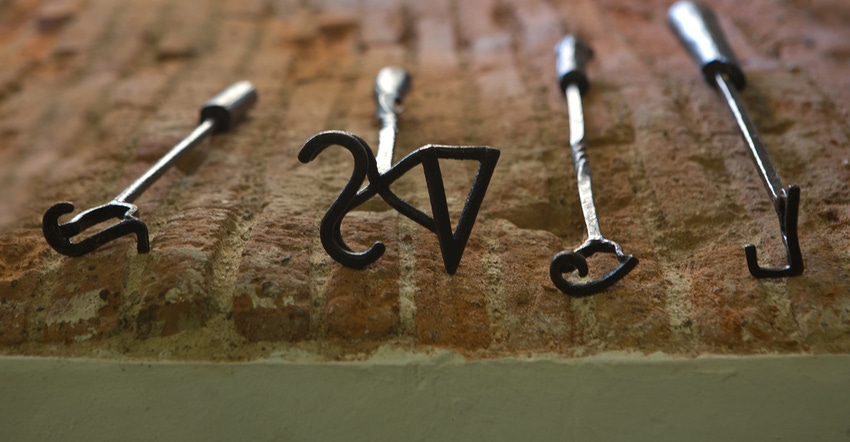
Google photos of “cattle branding,” and you’ll find pictures of men in leather chaps in the middle of the field, knees on the side of a calf, wielding a branding iron that came from a fire pit. It is a time-honored tradition on many cattle ranches across the U.S. While some still practice that technique, others use newer branding methods for identification and well, ranch branding.
Missouri is a state where brands are legally binding as a method to prove ownership. However, cattle producers must register their brand with the state. According to the Missouri Department of Agriculture, there are 5,000 brands recorded.
Choosing the brand
Before registering a brand, put some thought into the brand design, says University of Missouri livestock specialist Andy McCorkill. He says to avoid complex designs, as they are more likely to result in a blotched, difficult-to-read brand. Be simple and unique. A brand is a mark others will identify with your cattle operation for years to come.
To be legally binding, the brand must have at least two characters and be at least 3 inches in diameter. According to the law, brands are allowed in one of three places on either side of the animal — the shoulder, the center of the rib cage and the hip.
It Missouri, it cost $35 to register the brand, and a $20 fee is required every five years. Make sure it is registered before applying it to cattle.
Applying the brand
While traditional fire branding still exists, McCorkill finds two new methods work well in today’s cattle operations.
An electric branding iron takes less time to get hot. McCorkill says this method often leaves a more legible mark on the calf. It can be done in a squeeze chute, which is less stressful for the animal and the handler.
Freeze branding has come a long way in the last 20 years. Freeze branding requires dry ice and a solution such as 99% alcohol or gasoline to super-cool the iron. The copper iron must be left in place for 40 seconds, so the animal must be restrained. If left on too long, the freeze brand will burn like the fire brand. If left on too short a time, the brand will not be clear. If done properly, the color pigment in the affected hair follicles is destroyed, leading to the hair growing back white.
“The process really becomes more of an art than a science, and requires some experience to get it right every time,” McCorkill says. He says the method does not work well with light-colored beef cattle. However, some are using freeze brand animal identification numbers on the hips of a breeding herd because they are easily visible at a distance.
Whichever method you choose, make sure to brand early.
“Identification of the animal should happen as early in the calf’s life as possible,” McCorkill says. He points out that matching up cows and calves is easier at a young age, and branding is less stressful on smaller calves.
While branding serves its purpose as an identification tool, McCorkill says that there is a marketing aspect to consider.
Marketing the brand
Designing, registering and applying a unique brand does have a place in selling product.
“The brand can become your trademark for other endeavors,” he says. “Society today puts a high value on knowing where there food comes from and sourcing locally from known sources. Your brand could be a part of that marketing outlet if you chose to go down the direct marketing road.”
To register a brand, visit the Missouri Department of Agriculture’s website.
About the Author(s)
You May Also Like






